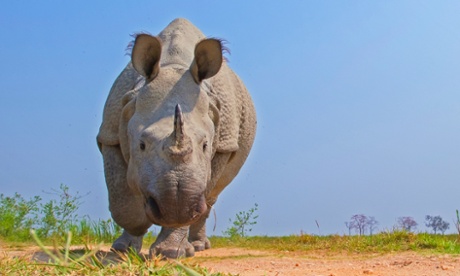
Over the past few years, businesses have increasingly talked about the need to assign monetary value to forests, wetlands and other ecosystems. The concept has been gaining momentum, and leading companies are already factoring it into their sustainability planning.
Walmart, for example, has worked to examine how threats to the natural world pose risks up and down its supply chain. It has begun advising its suppliers on how to make their products more climate resilient by reducing greenhouse gas emissions, improving water conservation, and preserving biodiversity and ecosystems services to help improve crop yields.
But for all this effort, programs to cut water use, waste and carbon footprints have not prevented the continued loss of species. Animal populations have dropped by half since 1970, and between 500 and 36,000 species are lost each year.
Steve Elliot, a professor at the University of Sydney Business School, says that there’s “a lot of talk and hand waving and international protocols around reducing biodiversity loss”, but the biggest challenge to the problem is that it competes with attention on environmental sustainability and climate change. “Companies get fatigued,” he says.
In a recent report, published in the New Nature of Business, Elliot and his team studied 10 pioneering companies – including Syngenta, Dow and Wipro – that are taking action on biodiversity. The report doesn’t address big companies like Unilever, but Elliot says they hold potential for showing leadership in how leading businesses support biodiversity and ecosystem services.
“Unilever is working in isolation in little bits that are interesting and build awareness, but the solution needs to be scaled,” he says, adding that, for the past 40 years, business has been looking at how to value nature. “Like any innovation, it starts with a slow take-up and pioneers and early adopters before it can take off.”
Putting a price on nature
One barrier to action has been the difficulty of accounting for biodiversity and ecosystem services. Even as nature elbows its way into sustainability strategies, there are continuing questions about the best way to measure the cost and impact of natural resources.
The Global Reporting Initiative (GRI), the most frequently used standard for environmental and biodiversity-ecosystem services reporting, isn’t sufficient, Elliot says. “They contain only six question questions and they are all yes-no answers,” he says. “Companies can say in their sustainability reporting that, yes, they are doing something about biodiversity, but that doesn’t really say much.”
Another option is policy development. Elliot says that policies which protect biodiversity and ecosystems can play a big role in achieving scale. The European Commission, for example, outlined six priorities and actions that can reduce threats to biodiversity. Using those guidelines, businesses have responded. For instance, Spain’s electricity transmission-line operator improved the compatibility of its electricity infrastructure with birds by mapping flight patterns of 45 species and reducing the accident rate due to collision with power lines.
Sally Duncan, researcher at Oregon State University and co-principal investor with Elliot on the New Nature of Business, hopes that the report’s new decision-making framework – in concert with NGOs, policy and financing tools, such as the European Investment Bank’s Natural Capital Financing Facility – can prompt large scale movement.
But the big question remains: exactly how can business quantify the face value of nature to guide their investments? One option, proposed by the World Business Council for Sustainable Development, suggests that companies that use natural resources – such as water – account for the value by estimating the cost they would pay if these resources were to suddenly go away.
This approach is useful for evaluating investments that are focused on restoring natural resources, but it also opens the door to another major concern: does this leave companies that do not directly use natural resources – such as service businesses – off the hook when it comes to addressing biodiversity?
‘Nurturing and replenishing instead of consuming and destroying’
In their report, Duncan and Elliot write that “transforming from business-as-usual to a new approach of business-as-solution is critically important to reduce the rate at which the environment is degraded”. The key to this transformation is reconsidering how companies view natural resources. “Business leaders need to establish a new relationship with nature where business nurtures and replenishes instead of consuming and destroying,” they write.
Duncan and Elliot offer several examples of the ways in which companies are placing value on intangible assets like migratory birds habitats or clean water for spawning fish. For example, Pfizer, in partnership with the Wildlife Habitat Council, makes its 2,200-acre site in Kalamazoo, Michigan, home to 350 fledgling tree swallows, eastern bluebirds and house wrens each year thanks to its habitat improvements for migratory birds. Similarly, IT company Wipro has converted five of its corporate campuses into biodiversity zones.
Wipro and Pfizer’s efforts have little to do with their bottom line. Duncan says, however, that Wipro’s accounting of biodiversity support is following a new move toward good corporate citizenship, even in the absence of a clear profit motive. Intel, too, seems to be moving in this direction: working with researchers from the University College Dublin, fisheries and the public works department, the chip manufacturer’s Leixlip, Ireland site has spent 15 years working to restore the Rye Water, a spawning ground for trout and salmon that leads to the Liffey River.
Trout and salmon aren’t part of Intel’s business plan, and it doesn’t extract water from the river for its operations. For that matter, tree swallows aren’t part of Pfizer’s manufacturing method and biodiversity isn’t clearly related to Wipro’s IT efforts. What these moves have in common, however, is that they recognize that good business lies, in part, in being a good neighbor – and reevaluating the nature of one’s neighborhood.
The finance hub is funded by EY. All content is editorially independent except for pieces labelled “brought to you by”. Find out more here.

